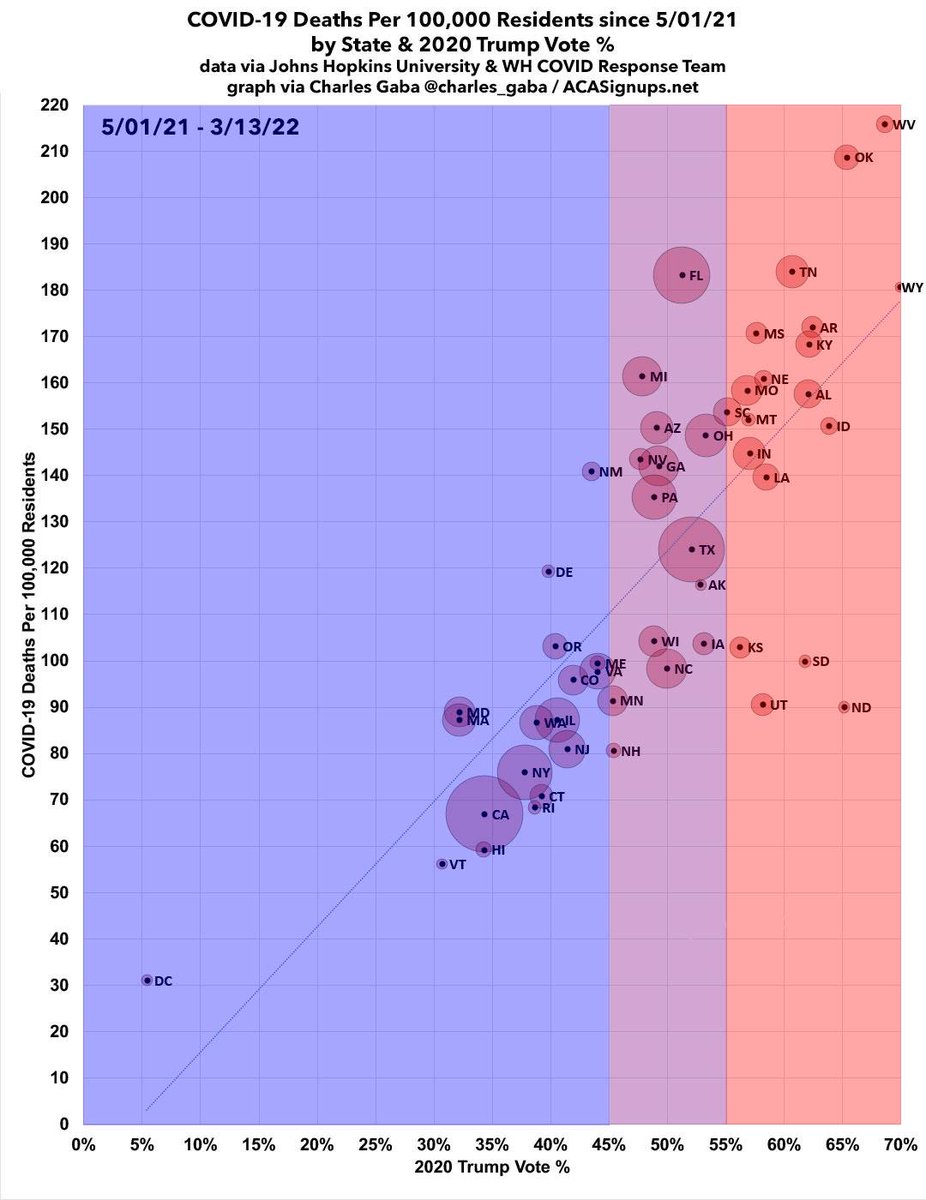
Several shout-outs from @Milbank here, thanks!
https://twitter.com/milbank/status/1503508134505160706
…including a brand-new *state-level* COVID death rate analysis which shouldn’t surprise anyone:
acasignups.net/22/03/14/time-…
acasignups.net/22/03/14/time-…
My findings are similar to those of @DougHaddix. While I usually focus on county-level data, it’s the same story (if not more so) at the state level: 

.@Milbank focuses on Florida. It might seem reasonable to assume that FL’s high death rate is due to them having a lot of seniors, but as @greg_travis and I noted last fall, that’s not nearly as big as a factor anymore for many reasons… acasignups.net/21/10/06/rumor…
…and furthermore, MAINE has both an older median age *and* a higher percent of seniors than Florida, yet their death rate since last spring ranks either 32nd or 36th depending on your starting date. Yet Florida’s rate is over 80% higher since then.
Very much related:
https://twitter.com/amymaxmen/status/1503199317850349569
• • •
Missing some Tweet in this thread? You can try to
force a refresh





